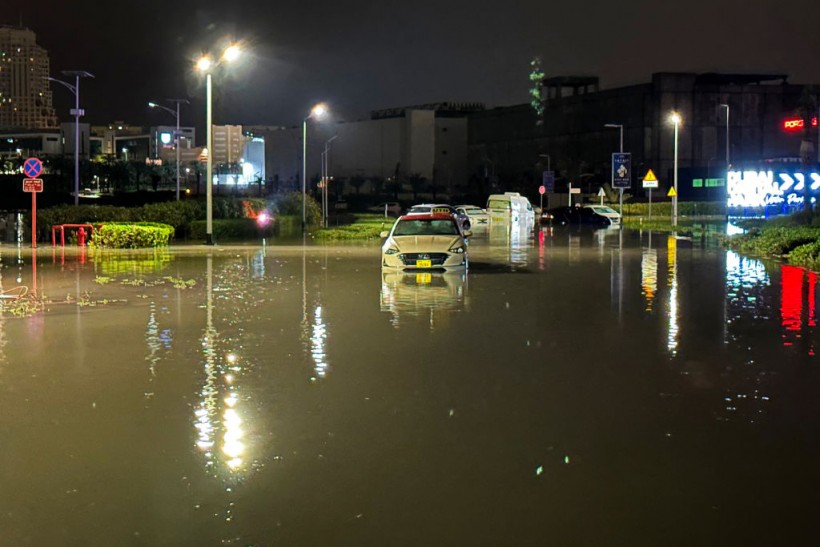Flooding has struck Dubai and other parts of the United Arab Emirates this week as the desert nation experienced its "heaviest rainfall in 75 years." The torrential rain submerged multiple roads and establishments, as well as the Dubai International Airport (DXB) which resulted in the disruption of flights. The unprecedented flooding is equivalent to 2 years' worth of rainfall, according to reports.
Rain also fell in other countries across the Middle East such as Bahrain, Oman, Qatar, and Saudi Arabia. However, the inclement weather's severe impact has been recorded in the UAE, particularly in Dubai. Before the event, the region had transitioned to its spring season, which spans from April to May before the scorching temperatures of the summer from June to September.
Dubai Flooding

(Photo : Photo by GIUSEPPE CACACE/AFP via Getty Images)
The Dubai flooding was caused by the downpour of more than 100 millimeters (almost 4 inches) of rain on Tuesday, April 16. There were no immediate reports of weather-related deaths in Dubai, but the inundation caused widespread travel disruption. In Ras al-Khaimah, another emirate in the UAE, an elderly man died after raging floodwaters swept his vehicle.
The government's Dubai Media Office posted on X, formerly Twitter, that local authorities allowed work from home for employees until Thursday and Friday, April 18 and April 19. The measure aims to ensure public safety as some low-lying areas are still under water. Authorities also warned the wet weather is also accompanied by thunderstorms and strong winds.
According to the state-run WAM news agency, 21 flights were diverted from DXB to Zayed International Airport within the last 24 hours amid the adverse weather, calling it "a historic weather event." The phenomenon even surpassed related floodings documented in the country since data collection started in 1949. However, reports say the heavy rain was caused by recent cloud seeding.
Also Read: South Asia Monsoon Floods Kill 19 People, Forces Thousands to Evacuate
Climate Change Impact
Multiple sources cited meteorologists from the National Center for Meteorology (NCM), stating that they conducted six or seven flights for the purpose of cloud seeding prior to the flooding rain, based on initial reports. However, according to updates as of Wednesday, April 17, the NCM states it did not target any clouds during its flights.
However, it remains unclear if the extreme weather event is solely influenced by anthropogenic processes, as scientists also link climate change as a potential cause. In recent decades, the Middle East with predominant arid and semi-arid environments has experienced the occurrence of heavy rain and flooding events.
In 2022, the National Aeronautics and Space Administration (NASA) reported that a dusty atmospheric river was responsible for torrential rain in northwestern Iran, which caused a deadly flooding back in April 2017. Despite the persistence of extreme temperatures and droughts in the region, experts highlight the potential impact of climate change in the Middle East's weather.
Related Article: Climate Change Fuels Frequent Shift From Worsening Drought to Deadly Flooding, Research Warns
© 2024 NatureWorldNews.com All rights reserved. Do not reproduce without permission.





